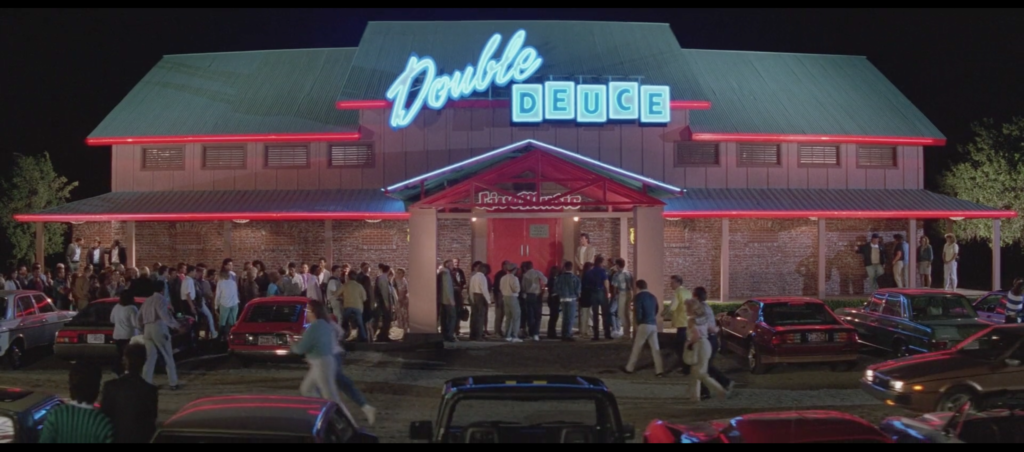I wasn’t joking when I joked yesterday that the road house we see when Jeff Healey starts playing the Doors’ “Roadhouse Blues” *is* Road House. Say what you want about the writing of this movie, but there’s almost always some serious narrative logic behind the editing of it—of which image follows which line, of which scene arrives at which moment. We saw it with Brad Wesley’s breakfast, the literal center of the film, before which Dalton is nice and after which Dalton is not nice. We saw it very early on, when director Rowdy Herrington’s credit appears immediately between Terry Funk yelling “DON’T COME BACK, PECKERHEAD!” at a man he just bodily threw through the doors of the Double Deuce and that shirtless yahoo boogieing on down in front of the chickenwire-wrapped stage. And we see it again here, when right after Dalton announces in no uncertain terms that he’ll never work for Brad Wesley, “Roadhouse Blues” plays over the debut of the new, remodeled Double Deuce in the very next shot. The scene that then takes place shows the bar as Frank Tilghman intended it to be—packed to the rafters, everyone happy, no one fighting (or shirtless). The booze is running low thanks to Brad Wesley’s blockade of distribution, but no violence breaks out and nothing breaks up the party. Everything else is going exactly the way the decision to hire Dalton to clean the place up was meant to ensure. Everything works. That’s the endpoint of the Dalton Path. That’s Road House.

